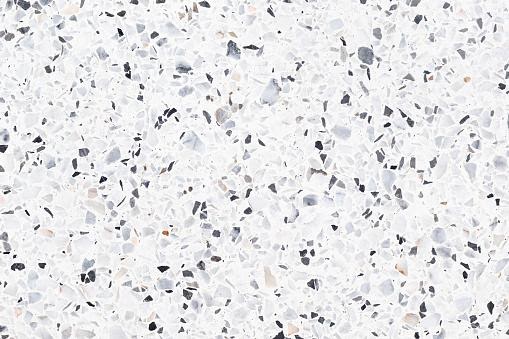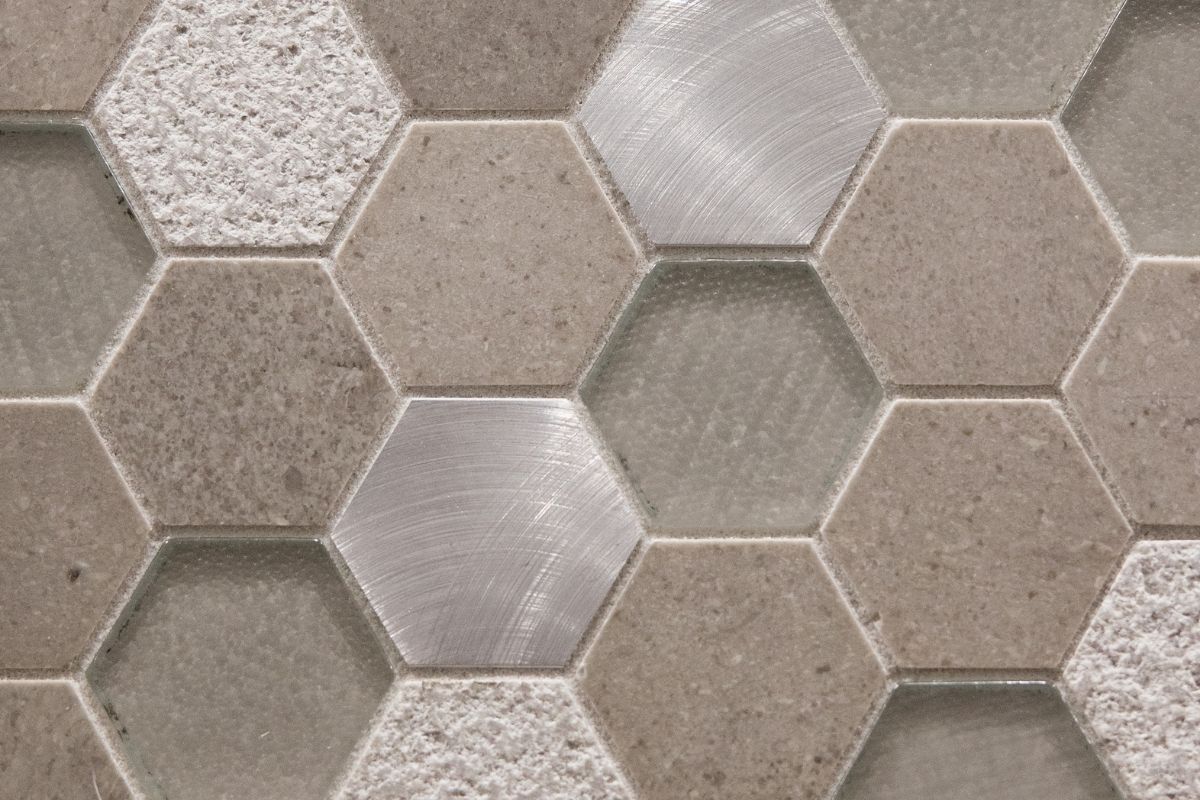Herringbone tiles have long been admired for their timeless elegance and distinctive geometric beauty. This pattern, which creates a V-shaped arrangement of tiles, brings a unique sense of movement and texture to any room. While herringbone tiles have been around for centuries, their modern resurgence in interior design shows just how versatile and adaptable this classic style can be. Whether you’re renovating a contemporary space or restoring a traditional home, herringbone tiles are the perfect way to add sophistication, texture, and visual interest. But how do these tiles work in both modern and traditional settings? In this article, we’ll explore how the herringbone design fits into both styles, offering inspiration and ideas for incorporating this pattern into your next project.
Introduction: The Charm of Herringbone Tiles
Herringbone tiles, with their distinctive zigzag pattern, have become one of the most sought-after design features in modern homes. Traditionally associated with luxury and fine craftsmanship, these tiles can elevate a space and make even the most simple rooms feel refined and stylish. In modern design, herringbone is seeing a resurgence, blending with contemporary aesthetics while still maintaining its classic appeal.
In traditional homes, the pattern continues to evoke a sense of heritage and timeless beauty, tying together classic materials like wood and marble with intricate detailing. Whether used as a feature in a modern open-plan kitchen or as an elegant accent in a traditional foyer, herringbone tiles offer endless design possibilities. Their versatility makes them just as appropriate for contemporary spaces as they are for classic homes, merging the best of both worlds.
A Brief History of Herringbone
The origins of the herringbone pattern trace back over two millennia, with one of its first uses appearing in ancient Roman architecture. Roman engineers used the pattern in the construction of their roads, where the design was not only visually appealing but also structurally sound, helping to distribute the weight of traffic more evenly across the road surface.
Centuries later, herringbone was adopted by European artisans to create intricate parquet floors in the Renaissance period. This use of the pattern in high-end homes and palaces solidified its reputation as a symbol of elegance and luxury. By the 19th and 20th centuries, herringbone had become synonymous with fine craftsmanship, used in everything from furniture to architectural details.
In modern design, the herringbone pattern has expanded beyond wood floors to include materials such as ceramic, porcelain, and marble, allowing the pattern to be used in a variety of contexts. Its durability and timeless beauty have ensured that it remains a popular choice for homeowners, designers, and architects alike.
Why Herringbone is Back in Style
The resurgence of herringbone tiles in contemporary interior design can be attributed to several factors. For starters, the pattern’s versatility has made it a go-to for designers looking to add texture and depth to a variety of spaces. Additionally, herringbone’s aesthetic appeal—its ability to create movement, highlight material textures, and add a sense of visual intrigue—has made it particularly popular in both residential and commercial design projects.
Here are a few key reasons why herringbone tiles are experiencing a modern revival:
- Versatility: Herringbone can be used in a wide range of design styles. Whether you prefer minimalist, industrial, or traditional interiors, herringbone adapts to fit your space. It can be used as a feature in kitchens, bathrooms, living areas, and even outdoor spaces, enhancing the overall design while maintaining its timeless appeal.
- Aesthetic Appeal: The V-shaped pattern of herringbone tiles creates a sense of movement that draws the eye, adding interest to otherwise simple rooms. When combined with materials like marble, porcelain, or wood, the pattern brings out the natural beauty of the material, making each tile feel like a work of art.
- Timelessness: Herringbone has stood the test of time, proving itself to be a classic pattern that never goes out of style. This makes it a safe investment for homeowners who want a design element that will stay relevant for years to come.
- Resale Value: Homes with well-executed herringbone floors or walls often benefit from increased resale value. Buyers are drawn to the luxurious, well-crafted appearance that herringbone tiles convey, making it a sound investment for any homeowner.
Design Applications: Where to Use Herringbone Tiles
Herringbone tiles work in a wide variety of spaces, adding sophistication and visual interest to both modern and traditional homes. Let’s explore how to incorporate this design into different rooms:
See more: Where to Find Cheap Sofa Beds Without Compromising on Quality
1. Kitchens
In modern kitchens, herringbone tiles can be used as a striking backsplash, creating a focal point behind the sink or stove. The pattern adds texture and dimension to the wall, especially when paired with simple cabinetry and countertops. For traditional kitchens, herringbone can be used on the floor, complementing wooden cabinets and warm-toned appliances for a timeless look.
2. Bathrooms
Whether in a modern or traditional home, herringbone tiles in bathrooms create a luxurious feel. In modern spaces, marble or glossy porcelain tiles in a herringbone arrangement can make a bathroom feel spa-like and high-end. In traditional bathrooms, wood-look tiles arranged in a herringbone pattern create a warm and inviting atmosphere, particularly when paired with vintage-style fixtures.
3. Living Rooms
In living spaces, herringbone tiles can be used on floors to create a striking, visually stimulating effect. In modern homes, larger tiles and a lighter grout color can give the space an open, airy feel. In more traditional living rooms, herringbone tiles in rich wood tones or stone materials add warmth and character to the space.
4. Outdoor Spaces
Herringbone tiles are also great for outdoor patios, terraces, or even garden pathways. Porcelain or natural stone tiles in a herringbone pattern are durable and weather-resistant, making them an excellent choice for outdoor design. In modern outdoor areas, sleek, dark-colored tiles can create a sophisticated, contemporary feel, while in traditional gardens, lighter or warmer tones complement the natural surroundings.
Materials and Finishes: Choosing the Right Option
When selecting herringbone tiles for your home, the material you choose will significantly affect the vibe of the space. Here are some popular materials and finishes to consider:

- Ceramic Tiles: Ceramic tiles are affordable, durable, and come in a wide variety of colors and finishes. Whether you opt for matte, glossy, or textured ceramic tiles, they can be used in both modern and traditional settings, making them a versatile choice.
- Porcelain Tiles: Porcelain is a highly durable material that mimics the appearance of natural stone or wood. Its resistance to moisture and stains makes it an excellent choice for bathrooms, kitchens, and high-traffic areas. Porcelain herringbone tiles are perfect for modern spaces that require both style and practicality.
- Marble: For a truly luxurious look, marble herringbone tiles are a timeless option. The natural veining in marble adds depth and sophistication to the pattern, making it ideal for both modern and traditional homes. Marble works especially well in bathrooms, kitchens, and living areas.
- Wood-Look Tiles: Wood-look tiles offer the warmth and texture of wood with the durability of tile. They’re particularly popular in modern homes that want to evoke a natural, rustic feel without the maintenance of hardwood. Wood-look herringbone tiles can also be used in traditional settings to bring a sense of warmth to the space.
Pros and Cons of Herringbone Tiles
While herringbone tiles offer numerous benefits, they also come with some challenges. Here are the pros and cons to consider before committing to this pattern:
Pros
- Timeless Style: Herringbone tiles are a classic pattern that never goes out of style, making them a smart long-term investment.
- Visual Interest: The unique V-shaped pattern adds movement and texture, making even simple rooms feel luxurious.
- Versatility: Herringbone works in a variety of settings, from kitchens and bathrooms to living rooms and outdoor spaces.
- Increased Resale Value: Homes with high-quality herringbone tiles often experience higher resale value, thanks to their luxury appeal.
Cons
- Complex Installation: The angled pattern of herringbone tiles can be more challenging to install, often requiring more time and skill, which can increase labor costs.
- Cost: While affordable options are available, premium materials like marble or natural stone can make herringbone tiles an expensive choice.
- Maintenance: Some materials, like marble or natural wood, require more maintenance than ceramic or porcelain tiles, especially in high-moisture areas.
Styling Tips for Herringbone Tiles
To make the most of herringbone tiles, consider the following styling tips:
- Grout Line Selection: The grout color you choose can dramatically impact the look of your herringbone tiles. A contrasting grout color will make the pattern stand out, while a matching grout color can create a seamless, elegant look.
- Mix Materials: Don’t be afraid to mix materials within the herringbone pattern. For example, combine porcelain tiles with a marble accent or create a unique wood-look effect by mixing different finishes within the pattern.
- Scale the Pattern: The size of the herringbone tiles can influence the overall feel of the room. Larger tiles create a bolder, more contemporary look, while smaller tiles can add subtle texture and detail to a traditional space.
The Future of Herringbone in Interior Design
As interior design continues to evolve, herringbone tiles will likely remain a favorite pattern due to their versatility and timeless appeal. We may see more innovative materials and finishes in the future, such as eco-friendly options and digital prints that mimic natural textures. The continued blending of modern and traditional styles will allow herringbone to shine in a variety of settings, ensuring its place as a design staple for years to come.
Conclusion: A Classic Pattern with Modern Appeal
Herringbone tiles are the perfect blend of old-world charm and contemporary style. Whether used in a sleek, modern home or a classic, traditional space, herringbone tiles offer a unique way to elevate your design. With their rich history, versatile applications, and timeless appeal, it’s no wonder they’ve made a comeback. By carefully choosing the right materials, finishes, and grout colors, you can make this classic pattern work seamlessly in any home. If you’re looking to add sophistication and texture to your next renovation, herringbone tiles are a beautiful and timeless choice.

